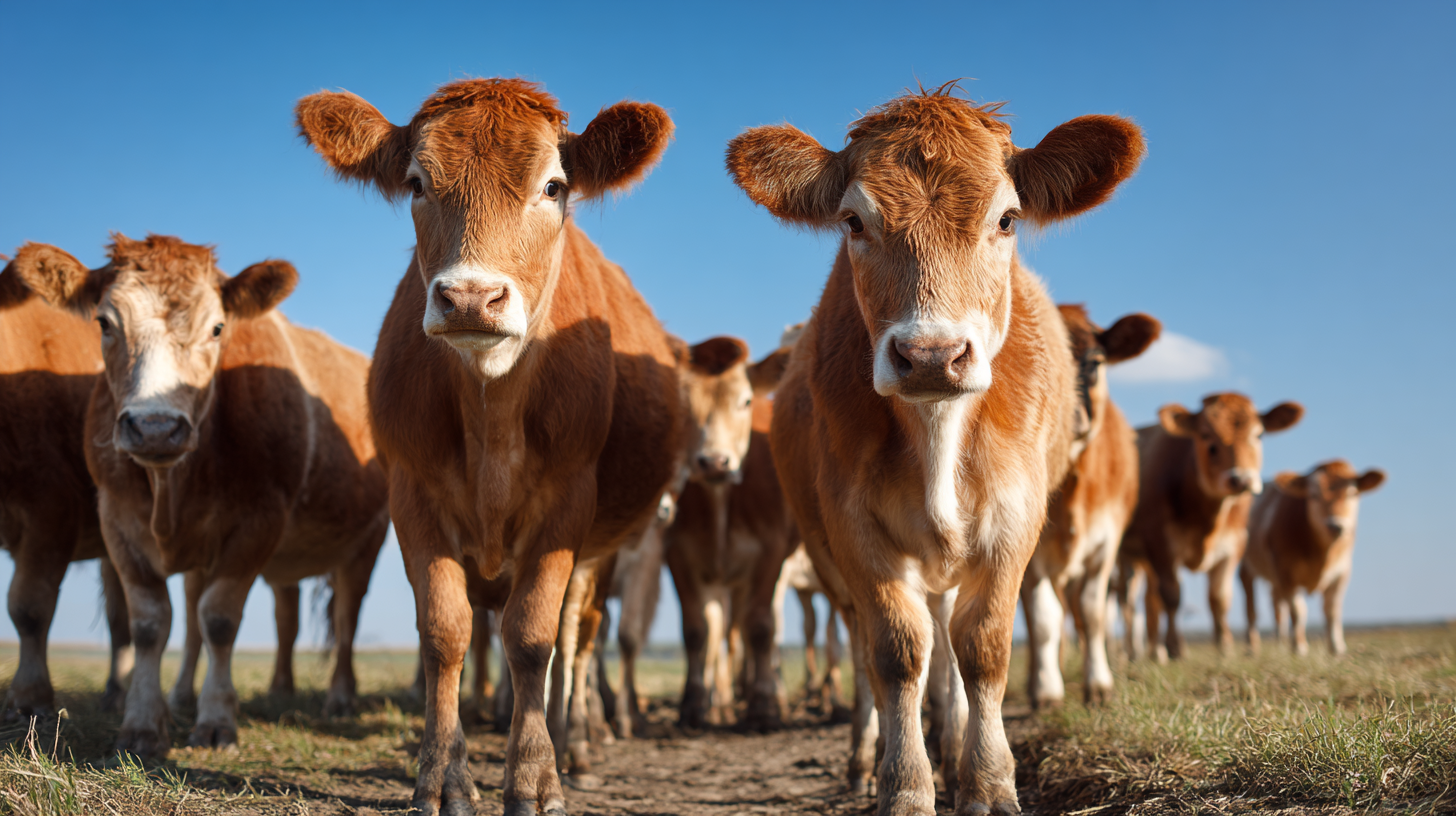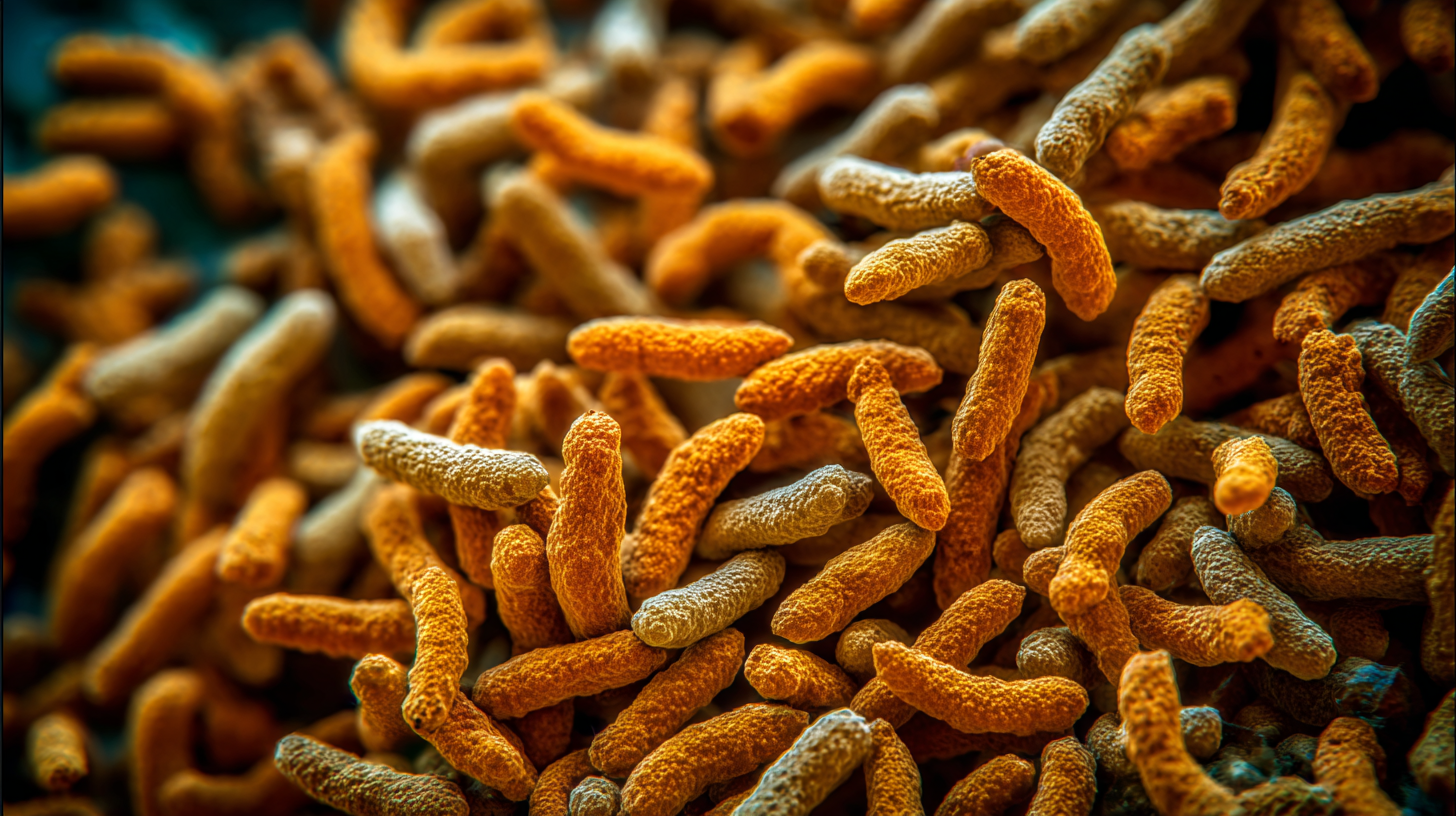
News
Understanding Tylosin Phosphate: Revolutionizing Antibiotic Use in Livestock Health
Tylosin Phosphate, a macrolide antibiotic, has emerged as a pivotal player in the enhancement of livestock health and productivity. Its application in veterinary medicine is particularly noteworthy, as it has demonstrated significant efficacy in treating and preventing respiratory and intestinal diseases in livestock. According to a report by the Animal Health Institute, the global market for veterinary pharmaceuticals is projected to reach $47.7 billion by 2027, with Tylosin Phosphate being a crucial component in this growth due to its effectiveness against antibiotic-resistant pathogens. Furthermore, the U.S. Department of Agriculture has indicated that the use of Tylosin Phosphate can improve feed efficiency and meat quality, thereby contributing to the sustainability of livestock production. As concerns about antibiotic resistance continue to mount, understanding Tylosin Phosphate's role in modern veterinary practices becomes increasingly important for ensuring both animal welfare and public health.

The Role of Tylosin Phosphate in Livestock Antibiotic Stewardship
Tylosin phosphate is gaining recognition as a pivotal component in the quest for antibiotic stewardship in livestock health. As resistance to traditional antibiotics becomes a growing concern, tylosin phosphate offers a targeted approach that not only enhances animal health but also minimizes the risk of resistance development. By promoting growth and preventing infections in livestock, this antibiotic is effectively reducing the need for broad-spectrum antibiotics, thus supporting a more sustainable livestock industry.
Furthermore, tylosin phosphate serves as a strategic tool in maintaining animal welfare while ensuring food safety. Its application can significantly lower the incidence of disease outbreaks, which translates to lower reliance on frequent antibiotic treatments. This proactive management of livestock health not only benefits the animals but also aligns with consumer demand for responsibly raised meat products. As the agricultural sector continues to adapt to antibiotic stewardship practices, tylosin phosphate stands out as an innovative solution for maintaining both productivity and public health.
Mechanisms of Action: How Tylosin Phosphate Targets Bacterial Infections
Tylosin phosphate is emerging as a crucial player in the fight against bacterial infections in livestock, primarily due to its unique mechanisms of action. This antibiotic targets the ribosome, an essential component for protein synthesis in bacteria, thereby inhibiting the growth of a wide range of Gram-positive bacteria. By binding to the 50S subunit of the ribosome, Tylosin phosphate effectively disrupts the translation process, leading to an overall reduction in bacterial proliferation. This ribosome-targeting capability is particularly important as antibiotic resistance continues to plague the livestock industry, warranting innovative solutions that can mitigate these challenges.
The rise of multidrug-resistant bacteria necessitates a deeper understanding of the mechanisms of antibiotic action and resistance. Current studies indicate that pathogens have developed various self-resistance mechanisms that significantly reduce the efficacy of traditional antibiotics. For instance, resistance determinants found in soil bacteria, particularly those of the genus Streptomyces, highlight the complex interplay between antibiotic producers and environmental bacteria. As antibiotic resistance becomes increasingly intertwined with livestock health management, Tylosin phosphate’s mode of action represents a promising avenue for enhancing therapeutic strategies while promoting animal welfare and food safety.

Optimal Dosage and Administration of Tylosin Phosphate in Farming Practices
Tylosin phosphate is gaining attention in livestock health management due to its antibiotic properties, which are essential in combating respiratory and gastrointestinal diseases among farm animals. Optimal dosage and administration are critical for maximizing its effectiveness while minimizing the risk of antibiotic resistance. According to the American Veterinary Medical Association, the recommended dosage of Tylosin phosphate typically ranges between 11 to 22 mg per kilogram of body weight, administered in feed for a duration of 5 to 14 days, depending on the specific health issue being addressed.
Tips: Always consult with a veterinarian to tailor the dosage based on the specific livestock species and their health status. Conduct regular assessments to determine the effectiveness of the treatment and make adjustments as necessary.
Moreover, ensuring proper feed formulation is vital. Research published by the Journal of Applied Animal Research indicates that improving the bioavailability of Tylosin phosphate can significantly enhance its therapeutic effects. Mixing it with suitable feed additives can promote better uptake in the gastrointestinal tract, thus improving overall animal health outcomes.
Tips: Monitor livestock closely during the treatment period, observing for any adverse reactions or improvements in health. This will help in making informed decisions about long-term antibiotic use and overall herd management strategies.
Understanding Tylosin Phosphate: Antibiotic Use in Livestock Health
This chart demonstrates the optimal dosage and benefits of Tylosin Phosphate in livestock health, highlighting its efficacy in reducing infections, cost efficiency, and improvement in animal growth.
Evaluating the Impact of Tylosin Phosphate on Animal Health and Productivity
Tylosin phosphate has emerged as a key player in enhancing livestock health and productivity, primarily due to its multifaceted benefits in combating bacterial infections. By targeting various pathogens, Tylosin phosphate effectively reduces the incidence of diseases that can impair the growth and overall welfare of livestock. Its broad-spectrum action not only helps in controlling infections but also plays a significant role in promoting a healthier gut microbiome, which is crucial for nutrient absorption and optimal growth rates.
Moreover, the application of Tylosin phosphate can lead to improved feed efficiency, translating to better weight gain in livestock. This efficiency is particularly valuable for farmers aiming to maximize their production while minimizing antibiotic resistance concerns. Recent studies indicate that the use of Tylosin phosphate can significantly enhance overall animal health, resulting in lower mortality rates and better economic returns. As the livestock industry continues to seek sustainable practices, Tylosin phosphate stands out as a revolutionary antibiotic that supports both animal well-being and productivity.

Regulatory Considerations and Future Directions for Tylosin Phosphate Use
The regulatory landscape surrounding Tylosin phosphate is evolving as its use in livestock health gains emphasis. Initially approved for veterinary use, Tylosin has been recognized for its potential to enhance animal well-being and productivity. Regulatory bodies, such as the FDA in the United States and the European Medicines Agency, are now reassessing guidelines to strike a balance between effective antibiotic use and the mitigation of antibiotic resistance. This involves stringent evaluation processes that require comprehensive data on Tylosin's efficacy, safety, and environmental impact.
Future directions for Tylosin phosphate's regulatory considerations include a focus on responsible usage practices. Stakeholders, including farmers, veterinarians, and policymakers, are urged to collaborate on developing stewardship programs that emphasize the judicious use of antibiotics. Additionally, ongoing research into alternatives and adjunct therapies could provide a more holistic approach to livestock health, potentially reducing reliance on antibiotics. By prioritizing regulatory reform and responsible usage, the industry can harness the benefits of Tylosin phosphate while safeguarding public health and animal welfare.
Related Posts
-

Mastering the Essentials of Best Tylosin Phosphate for Global Procurement Success
-

Essential Checklist for Sourcing High-Quality Tylosin Phosphate: What You Need to Know
-

Unmatched Quality and Excellence in Valaciclovir Hcl Manufacturing from China
-

Solutions for Enhanced Patient Outcomes: The Role of Ceftriaxone Sodium in Modern Antibiotic Therapy
-

10 Essential Tips for Sourcing High-Quality Vitamin B Complex Globally
-

7 Essential Tips for Maximizing the Benefits of Phytic Acid in Your Skincare Routine





